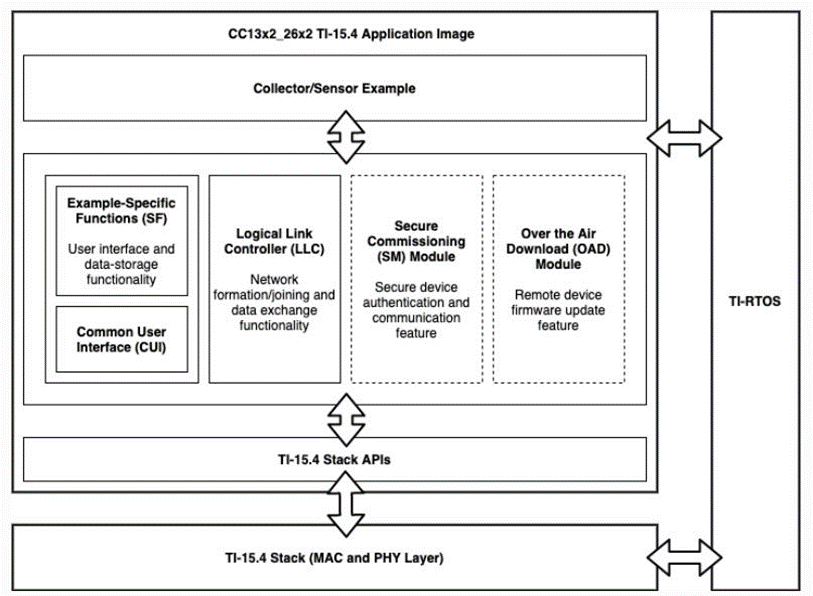SWRA782 October 2023 CC1311P3 , CC1311R3 , CC1312PSIP , CC1312R , CC1312R7 , CC1314R10 , CC1352P , CC1352P7 , CC1352R , CC1354P10
3 Software Block Diagram
The TI 15.4-Stack implements the MAC and PHY layer of the Simplelink devices and is implemented as shown in Figure 3-1.
The out-of-the-box examples provide applications using the TI 15.4-Stack. On top of the TI 15.4-Stack other features like security or OAD can be implemented as done in our examples.
More information regarding the software architecture can be found in the TI 15.4-Stack User's Guide within the Application overview section. TI 15.4-Stack is FreeRTOS POSIX compatible. TIs SDKs contain several examples running the TI 15.4 stack using FreeRTOS.
 Figure 3-1 Software Block Diagram
Figure 3-1 Software Block Diagram